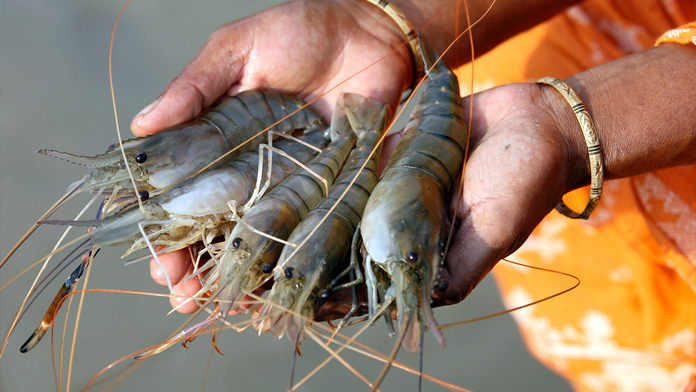Exclusive content

In the face of global challenges within the shrimp market, certain Asian countries are actively working to sustain production and exports. Despite a notable decrease in imported shrimp broodstock and the discouragement of many shrimp farms, India has achieved success in 2023, demonstrating resilience in the industry.
India’s shrimp export volume for the first three quarters of 2023 increased by 2% compared to the same period last year. Projections indicate a marginal decrease of only 1% for the entire year, relative to the record-setting performance in 2021. The trajectory of India’s shrimp exports has experienced fluctuations, with a 16% increase in the first quarter, an 11% decrease in the second quarter, and a subsequent 6% rise in the third quarter.
India’s main export shrimp products include vannamei shrimp (TTCT), black tiger shrimp, and value-added shrimp. Raw material trade constitutes a significant portion, accounting for 86% of the total shrimp export volume in 2023. Notably, black tiger shrimp exports surged by 161% in the first quarter and 55% in the third quarter, leading to an overall annual increase of 91%. However, the export of value-added shrimp, an area where India faces challenges, declined continuously in the first three quarters of the year.
Despite these successes, falling global shrimp prices have impacted the value of Indian shrimp exports, resulting in a 13% decrease to 3.7 billion USD in the first three quarters of the year. The prices of shrimp exported to key markets, the US and China, have not shown significant improvement. However, there is a glimmer of hope as the price of shrimp exported to China slightly increased by September, signaling a potential temporary recovery.
In comparison, Thailand and China continue to be major players in the global shrimp market, with Thailand maintaining a stable shrimp export volume of 125,000 tons since 2018. Thailand’s shrimp industry demonstrates a balanced structure, with 50% raw shrimp and 50% value-added shrimp. In 2022, Thailand focused on top markets, including China, Japan, the US, Taiwan, and Korea. Unfortunately, oversupply challenges have led to a 12% decline in Thailand’s shrimp exports in the first three quarters of 2023, with an estimated total export volume of 110,000 – 115,000 tons for the entire year.
China, on the other hand, witnessed a decrease in shrimp exports from 300,000 tons in 2011 to 125,000 tons in 2022. Unlike Thailand, China’s raw shrimp exports declined, while value-added shrimp remained relatively stable. Challenges persist, particularly in raw shrimp exports, which are unlikely to recover in 2023.
A potential threat to the global shrimp industry is the looming El Nino wave, with Ecuador’s shrimp farms at risk of flooding and waterlogging. In Asia, the winter accompanying El Nino is anticipated to cause a significant decrease in shrimp production in the fourth quarter of 2023.
Despite efforts, India’s shrimp production in 2023 is expected to decline by at least 10-15%. The reduction in shrimp broodstock imports signals potential challenges in increasing raw shrimp supply for 2024.